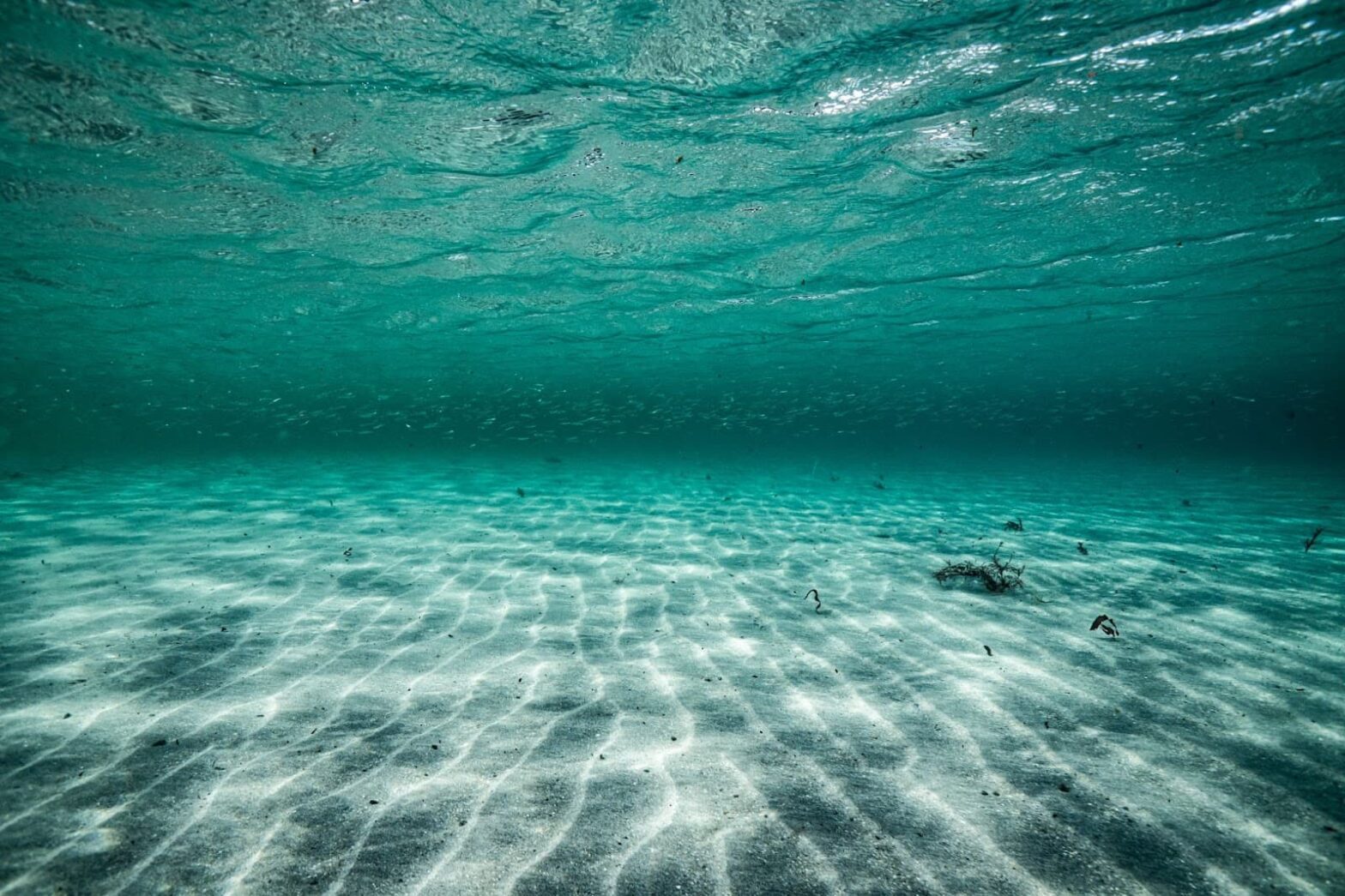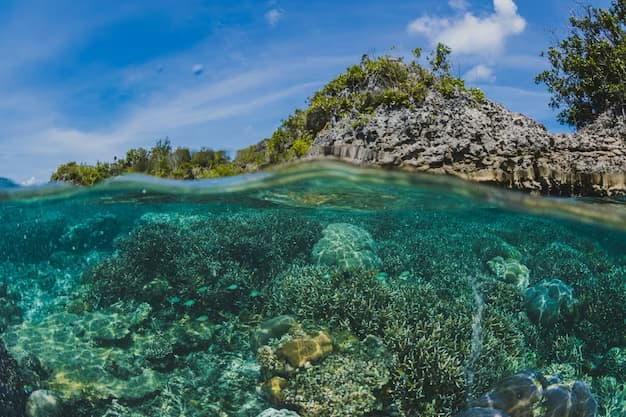The expanse of the ocean stretches far and wide, shrouded in enigmatic allure and breathtaking splendor, encompassing over 70% of our planet’s surface. Within its vast embrace, scientists and adventurers alike find themselves captivated by the enigmas concealed within its depths, mysteries that continue to elude comprehension. From the mesmerizing shallows teeming with life to the incomprehensible abyssal plains, the ocean’s depths stand as a testament to the awe-inspiring marvels of Earth’s geological formations and diverse ecosystems.
Embark with us on an expedition to unveil the profound secrets concealed within the ocean’s unfathomable depths, delving into its mysteries with fervent curiosity and unwavering determination.
A Detailed Guide to the Ocean Layers
The world’s oceans, known for their vastness and depth, are divided into various layers, each unique in its characteristics. Understanding these layers is crucial to appreciating the diversity and complexity of marine life. These layers are differentiated by temperature, light penetration, and the species residing within them.
The Epipelagic Zone: A Closer Look
The Epipelagic Zone, with a depth ranging from the ocean surface to approximately 200 meters, is the first of the five main ocean layers. Also referred to as the sunlight or euphotic zone, this region brims with life, thanks to its accessibility to sunlight.
Key Characteristics:
- Depth: 0 – 200 meters;
- Temperature: Varies from 36°C to -4°C.
In this vibrant zone, photosynthesis occurs at an exceptional rate, courtesy of the abundant algae. These microscopic organisms harness sunlight to transform carbon dioxide into nourishment, thereby initiating the food chain. Remarkably, through their photosynthetic processes, they are responsible for generating over half of the Earth’s oxygen supply.
Since the Epipelagic Zone interfaces with the oceanic surface, it experiences fluctuations in temperature ranging from 36°C to a chilly -4°C, contingent on the geographic location.
Biodiversity in the Epipelagic Zone:
This layer is a bustling hub for a broad spectrum of marine life. It is notable for its breathtaking array of species, owing to the plentiful sunlight that fuels food production and growth. Among its residents are:
- Billfish;
- Tuna;
- Sharks;
- Jellyfish;
- Various species of whales and dolphins.
Studying the Epipelagic Zone offers intriguing insights into the ocean’s complex ecosystem and its critical role in sustaining life on Earth.
The Mesopelagic Zone: A Journey into Twilight
Just below the vibrant epipelagic zone lies the mysterious Mesopelagic Zone, known popularly as the Twilight Zone. It spans an impressive depth of 200 meters to 1,000 meters, making it a crucial area of study for marine biologists and oceanographers.
Key Characteristics:
- Depth: 200 – 1,000 meters;
- Temperature: 20°C to 4 °C.
Sunlight fades significantly in the Mesopelagic Zone, with photosynthesis rendered impossible due to the absence of sufficient light. Consequently, this zone becomes progressively darker and colder as you descend, with temperatures plunging from 20°C at the top layers to a chilling 4°C at its lower boundaries.
The Mesopelagic’s Role in Ecosystems and Carbon Cycling:
Despite its dark and cold demeanor, the Twilight Zone plays a crucial role in sustaining the ocean’s food chain and carbon cycling. Its inhabitants, which include creatures like the anglerfish, squid, eels and various types of zooplankton, simultaneously act as both predators and prey, providing sustenance for larger marine animals and helping to control the population of organisms in the upper ocean layers.
The Mesopelagic’s Thermocline Layer:
Within the Mesopelagic Zone, there’s a distinct layer referred to as the thermocline, where water temperatures decrease drastically. This steep temperature gradient separates the warmer epipelagic from the colder mesopelagic and serves as a barrier for various marine creatures that are unable to survive extreme temperature changes.
The Twilight Zone, aptly named for its dimmed light and eerie tranquility, is more than just a void beneath the ocean’s surface. Its importance to the grand scheme of Earth’s ecosystems is irrefutable, making the study of this zone a fascinating endeavor.
Biodiversity in the Mesopelagic Zone:
Despite its harsh conditions, the Twilight Zone is teeming with unique and diverse life forms. Some of these include:
- Anglerfish;
- Various species of squid;
- Multiple types of eels;
- Abundant zooplankton communities.
The Bathypelagic Zone: Venturing Into the Midnight Zone
Venture beyond the Twilight Zone, and you’ll find yourself in the mysterious expanse known as the Bathypelagic Zone, otherwise known as the “Midnight Zone” or “Midwater Zone.” A seemingly infinite stretch of darkness, this region of the ocean ranges between 1,000 to 4,000 meters deep.
Key Characteristics:
- Depth: 1,000 – 4,000 meters;
- Temperature: Approx. 4°C throughout the zone.
Sunlight is entirely absent in this zone, making conditions challenging for life to thrive. Nevertheless, a variety of creatures calling this zone home have evolved remarkable survival strategies.
Life in the Bathypelagic Zone: Bioluminescence and Beyond
The Midnight Zone’s inhabitants have adapted to the challenging conditions by developing the ability to generate their own light – a phenomenon known as bioluminescence. This incredible adaptation aids them in communication, hunting, and evading predators.
Innovatively, the creatures of this zone also utilize ‘marine snow.’ This organic matter, falling from the surface layers, serves as a primary food source for many of the Bathypelagic Zone’s residents who scavenge or hunt cohabitants.
Diversity of Bathypelagic Zone Residents:
Even in the harsh environment of the Bathypelagic Zone, diversity reigns. Some of its unique residents include:
- Anglerfish with horrifying teeth and glowing lures;
- Vampire squids that can cloak themselves in dazzling light;
- The fiercely adaptive dragonfish;
- Gulper eels with enormous mouths for trapping prey;
- Various species of amphipods and shrimp.
The Bathypelagic Zone, while seemingly void, is a testament to the resilience and adaptability of life. Its unique residents and their survival strategies make it an intriguing area for researchers and marine enthusiasts alike. Each descent into the Midnight Zone is a journey into the remarkable capabilities of life in our oceans’ darkest depths.
The Abyssopelagic Zone: A Dive into the Ocean’s Abyss
Descend even deeper into the ocean depths, and you’ll immerse into the Abyssopelagic Zone, aptly named the “Abyss” or the “Abyssal Zone”. This layer, ranging from 4,000 to 6,000 meters in depth, is one of the most profound and least explored parts of the ocean.

Key Characteristics:
- Depth: 4,000 – 6,000 meters;
- Temperature: 0°C to 4°C.
The name “Abyssal,” originating from the Latin term “Abyssalis” – meaning ‘bottomless’ or ‘unfathomably deep’ – is a fitting description for this zone. Here, in the perpetual darkness and freezing temperatures between 0°C to 4°C, pioneer the colossal abyssal plains and the ominous oceanic trenches.
The Abyssal Plain and Oceanic Trenches:
Beyond the continental shelf and rise, the Abyssal Zone unveils an expansive region known as the abyssal plain. Mostly flat, this feature extends over a substantial fraction of the ocean floor, with deep oceanic trenches scattered beneath it. These trenches, reaching chilling depths of up to 11,000 meters, define almost half of the ocean’s floor. The Challenger Deep, located at the southern end of the Mariana Trench, is the most famous of these deep-sea trenches, holding the title for the deepest part of the Earth’s oceans.
Abyssopelagic Life: A Showcase of Evolutionary Adaptations
Despite the extreme conditions, the Abyssal Zone hosts a noteworthy range of mostly translucent and dark invertebrates. These creatures exhibit phenomenal adaptations to survive in the intense pressure, near-freezing temperatures, and absolute darkness of their environment. A few well-known examples are:
- The intimidating humpback anglerfish;
- The elusive deepwater squid;
- Different species of octopus;
- Strange looking sea pigs;
- The delicate sea spiders.
The Abyssopelagic Zone, with its desolate plains and deep trenches, is a realm of wonders waiting to be discovered. Though intimidating with harsh conditions, the life here is a testament to the adaptability and resilience of Earth’s creatures.
The Hadalpelagic Zone: Exploring the Ocean’s Deepest Realms
Venturing below the Abyssal Zone, the ocean’s secrets deepen with the Hadalpelagic Zone, also known as the “Hadal Zone” or “The Trenches.” This zone, spanning from 6,000 meters to the ocean’s deepest point at approximately 11,000 meters, is home to some of the most extreme conditions on Earth.
Key Characteristics:
- Depth: 6,000 – 11,000 meters;
- Temperature: Presumed to be 0 – 4°C.
In the Hadalpelagic Zone, you enter a realm where the average ocean floor depth catapults from 6,000 meters to staggering trenches over 11,000 meters deep. This zone is exclusively present in oceanic trenches and, collectively, covers a geographical expanse roughly the size of Australia.
A Peek into The Oceanic Trenches:
The oceanic trenches, the primary characteristic of the Hadal Zone, are the deepest parts of the ocean, reaching depths of over 11,000 meters like the Mariana Trench. These trenches are formed by plate tectonic activity that pushes one tectonic plate beneath another, creating a deep, narrow depression. The temperatures here are estimated to be between 0 to 4 °C, but there is much yet to be learned about this obscure, seemingly inhospitable environment.
Hadalpelagic Life: Adaptability at its Peak
In the face of extreme pressure, cold temperatures, and total darkness, life in the Hadal Zone might seem improbable. Yet, several species have adapted to survive in these tough conditions. Here, you’ll find creatures like:
- Sea cucumbers that filter the sediment for food;
- Bristle worms known for their resilience;
- Sea anemones clinging to rocks in the trenches;
- Sea stars that trawl the ocean floor;
- Certain specialized species of crabs.
Despite the challenging conditions, these life forms exhibit remarkable resilience and adaptability by thriving in an area once thought to be devoid of life.
The Hadalpelagic Zone, though intimidating in its depth and darkness, reveals the profound adaptability of life on Earth. It serves as a stark reminder of the endless mysteries our oceans hold, awaiting further exploration.
Unveiling Ocean Secrets: Fascinating Facts and Figures
The ocean, a vast and largely unexplored realm, holds a plethora of secrets and is integral to life on Earth. Here are some intriguing facts to underscore its importance:
- The ocean is the planet’s largest supplier of oxygen, contributing to over half of the world’s oxygen supply. This supply is mainly due to the photosynthetic activity of marine algae and phytoplankton;
- Despite constituting more than 70% of the Earth’s surface, it’s estimated that we have only explored a mere 5% of the world’s oceans. This leaves a staggering 95% of the oceanic realm yet to be discovered and studied. Interestingly, despite the limited exploration, human activities have managed to impact every corner of the ocean’s surface through waste and chemical pollution;
- The ocean’s vastness is mind-boggling. It eclipses the combined total area of all landmasses on Earth, underscoring its geological dominance;
- The Mariana Trench, located in the western Pacific Ocean, is the deepest point in all the world’s oceans. Its lowest point, known as the Challenger Deep, descends approximately 11,000 meters below the ocean’s surface. This depth exceeds the height of Mount Everest, the tallest point on Earth’s surface;
- Despite the challenging conditions in various oceanic zones, the oceans are teeming with biodiversity. Scientists have cataloged over 230,000 known marine species, but they speculate there may be millions more undiscovered. The exploration and study of these yet-to-be-discovered species could open new avenues in various scientific fields.
These engrossing facts illustrate the ocean’s immense significance and highlight the critical need for continued exploration and conservation efforts. Understanding our oceans more thoroughly opens the portal toward sustainable utilization and protection of this predominant part of our planet.
Conclusion
In conclusion, the ocean remains an inexhaustible wellspring of wonder and fascination, its depths holding secrets yet to be fully uncovered. As we continue to explore its vast expanse and delve deeper into its mysteries, we are reminded of the boundless beauty and complexity of our planet. Let our ongoing quest to understand the ocean serve as a testament to the enduring curiosity and exploration-driven spirit of humanity.



